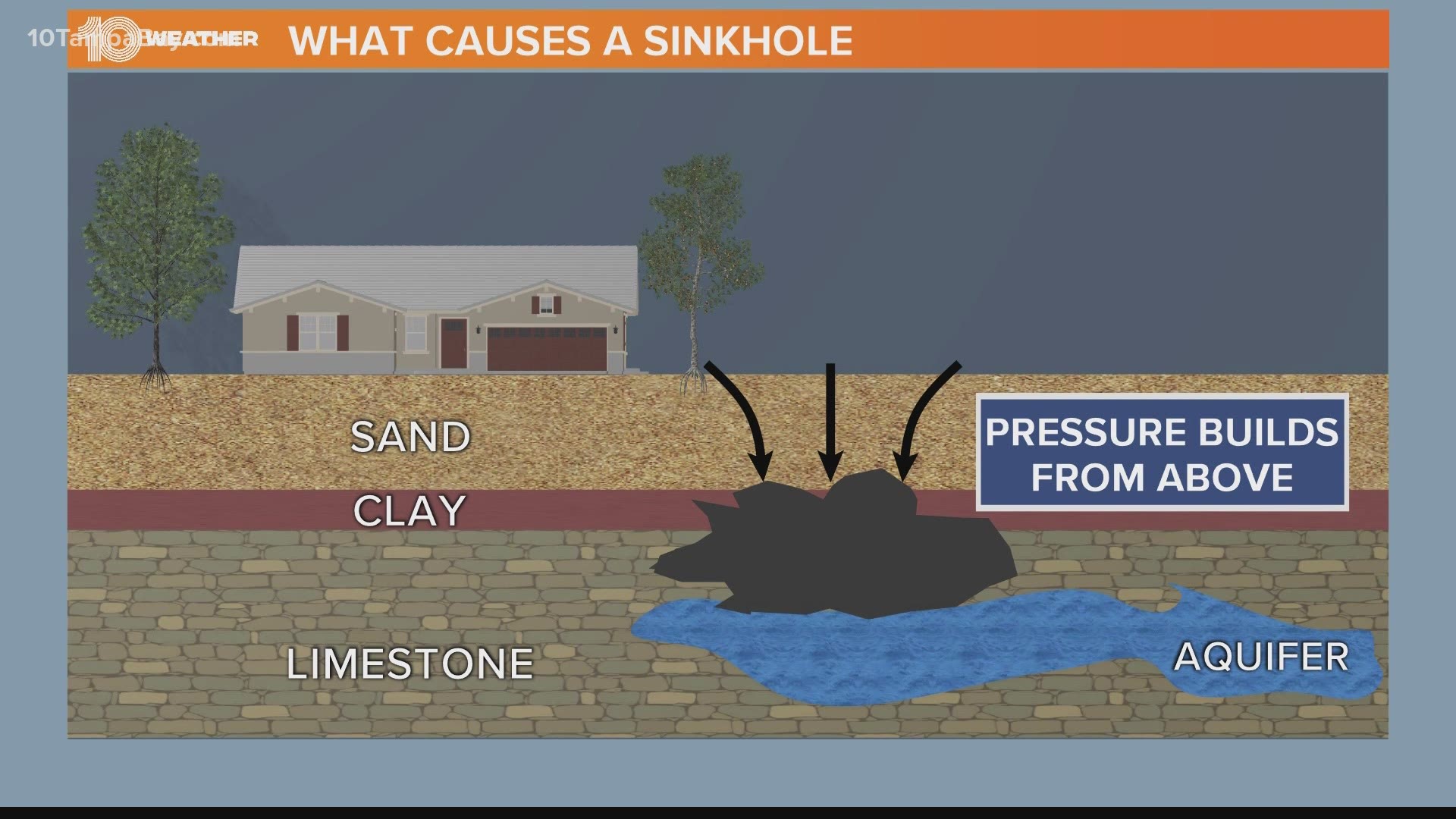PASCO COUNTY, Fla. — It's a question you might be wondering since a big hole showed up in Pasco County and you've seen it called a "suspected sinkhole" or "depression" and not a sinkhole.
According to the United States Geological Survey, sinkholes are "an area of ground that has no natural external surface drainage -- when it rains, the water stays inside the sinkhole and typically drains into the subsurface."
The USGS says Florida, Texas, Alabama, Missouri, Kentucky, Tennessee, and Pennsylvania lead the nation for states where sinkholes will cause the most damage.
Sinkholes can vary in size: They can measure from a few feet across to hundreds of acres. They can also be less a foot deep to more than 100 feet deep, the USGS said.
You can find sinkholes where the rock under the surface is limestone, carbonate rock, salt beds, or rocks that can naturally be dissolved by groundwater circulating through them. As the rock dissolves, spaces and caverns develop underground.
You can find more out about sinkholes on the USGS's website.
RELATED: Pasco County finds suspected 130-foot sinkhole continues to grow, road closure remains in place
What other people are reading right now:
- Rays take Game 1 of the ALCS, beating Houston 2-1
- Supreme Court nominee Amy Coney Barrett's first hearing begins
- What is Indigenous Peoples Day? And what happened to Columbus Day?
- President Trump set to make first visit to Florida since testing positive for COVID-19
- 5 things to know about Amy Coney Barrett as Supreme Court hearings begin Monday
- What you need to know about the 6 constitutional amendments on Florida ballots
►Breaking news and weather alerts: Get the free 10 Tampa Bay app
►Stay In the Know! Sign up now for the Brightside Blend Newsletter

